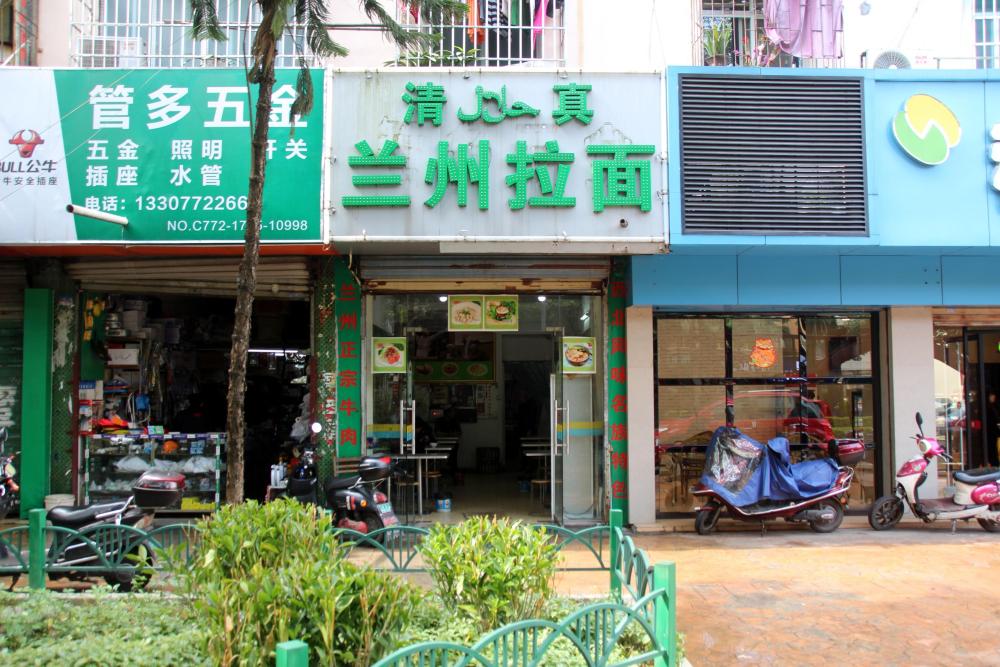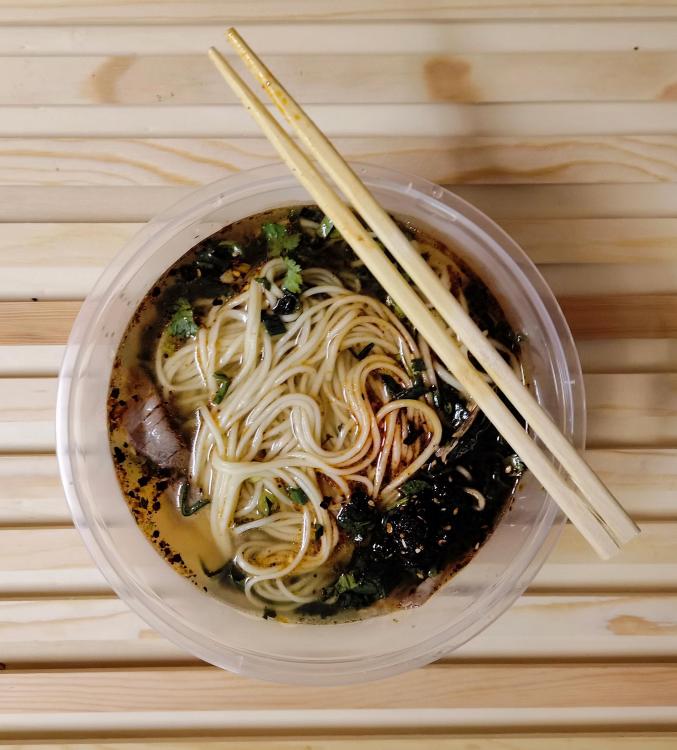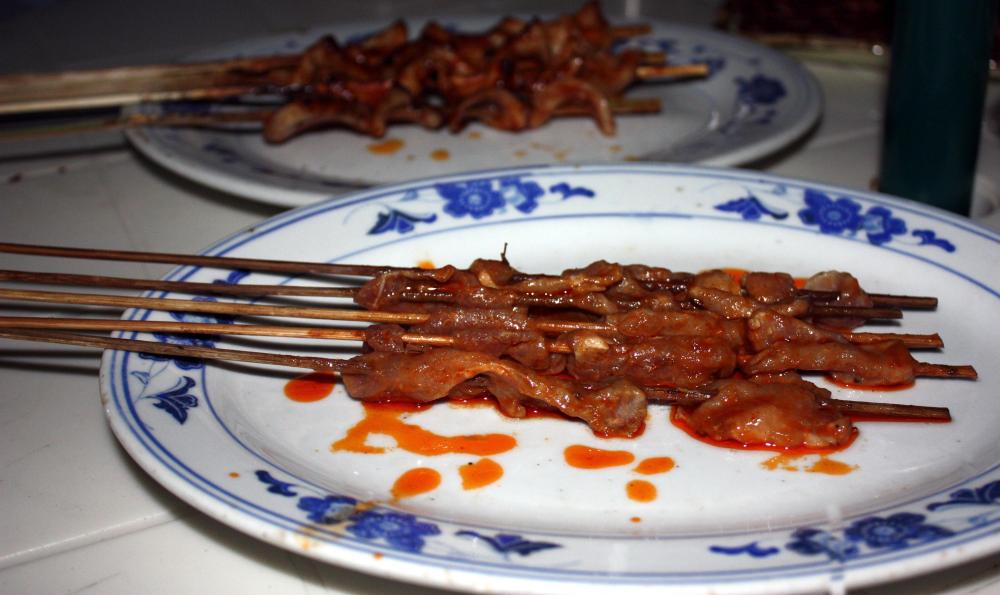There are two large groups of Muslims in China. The Uighur people of Xinjiang in the far west bordering the ‘stans’* and the 回族 (huí zú), Hui ethnicity, who mainly congregate in Ningxia in north·west China but can be found all over the country. There is a particularly large community in Xi’an. But almost every province has some presence. And, the Hui’s influence on Chinese and other cuisines has been immense yet they get little recognition.
Wherever they go, like many emigrants, they take their culinary traditions with them and many open restaurants specialising in their food. Their staple diet is wheat rather than rice and noodles predominate. In keeping with their dietary laws, they do not eat the meat of pigs, dogs, horses, donkeys, mules, or beasts of prey. Pigeons are considered special and may only be eaten in certain religious situations. They do not eat blood, either. In fact, you should never even mention blood at the dinner table or in the kitchen. Also, joking about food is strictly forbidden.
Their most famous dish, at least in China, is probably 兰州拉面 (lán zhōu lā miàn), Lanzhou hand-pulled noodles, most popularly ordered with with beef. Lanzhou is the capital of Gansu Province which neighbours Ningxia and also has a sizeable Hui population.
The dish consists of wheaten hand-pulled noodles (拉面 – lā miàn) in a broth with beef and vegetables. It is a simple dish, yet difficult to get right; like Japanese ramen, the broth quality is crucial. The Japanese word ramen is borrowed from the Chinese ‘lamian’. Done properly, it is a delicious favourite everywhere. Most cities and large towns in China have Hui run Lanzhou Lamian restaurants. In this relatively small city where I live, there are around a dozen with the dish's name also being parat of the restaurant’s name. Many more sell it.
The sign on the the rest aurant (centre) reads Muslim Lanzhou Lamian
The dish wasn’t necessarily invented by a Hui person, but one Hui man, Ma Baozi, is credited with perfecting and standardising it in 1915. He famously said that a good bowl of Lamian should contain five colours: clearness in the broth, white in the radish, green in the coriander leaf / cilantro, red in the chili oil, and yellow in the noodles. Instant or quick-cook packets of Lanzhou Lamian available in the west are a no-go area for the Chinese!
There are recipes online but I’ve never met anyone here who makes it themselves. It is certainly cheaper and probably better in one of the restaurants where it’s made by by people who have been making the noodles by hand, then preparing (and eating) the dish all their lives. It is also more fun as they usually pull the noodles in front of you which is entertaining to watch.
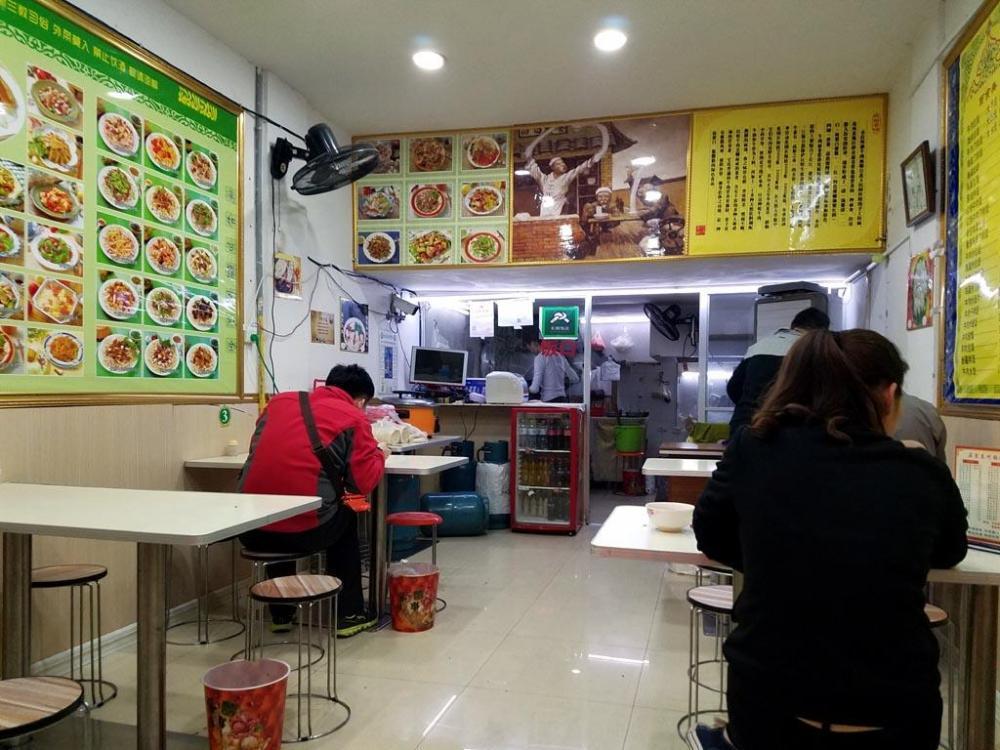
The kitchen is open so you can see the noodles being pulled .
Lanzhou Lamian
The other food the Hui are most known for is their 肉串 (ròu chuàn), grilled mutton skewers (肉串儿 – ròu chuàn ér in Beijing dialect). These can be found in every city’s night food market and in restaurants. They are from Xinjiang and the Uighurs, but it was mainly the Hui who carried them across China. Cubes of mutton are interspersed with the sheep’s fat, preferably the tail fat, then grilled over charcoal while being sprinkled with a mix of powdered cumin seed and chilli. Follow your nose to find them!
Rou chuan
Although these two are the most popular, please don’t fall into the trap of thinking that’s it. Below is one half of the restaurant pictured above's menu.
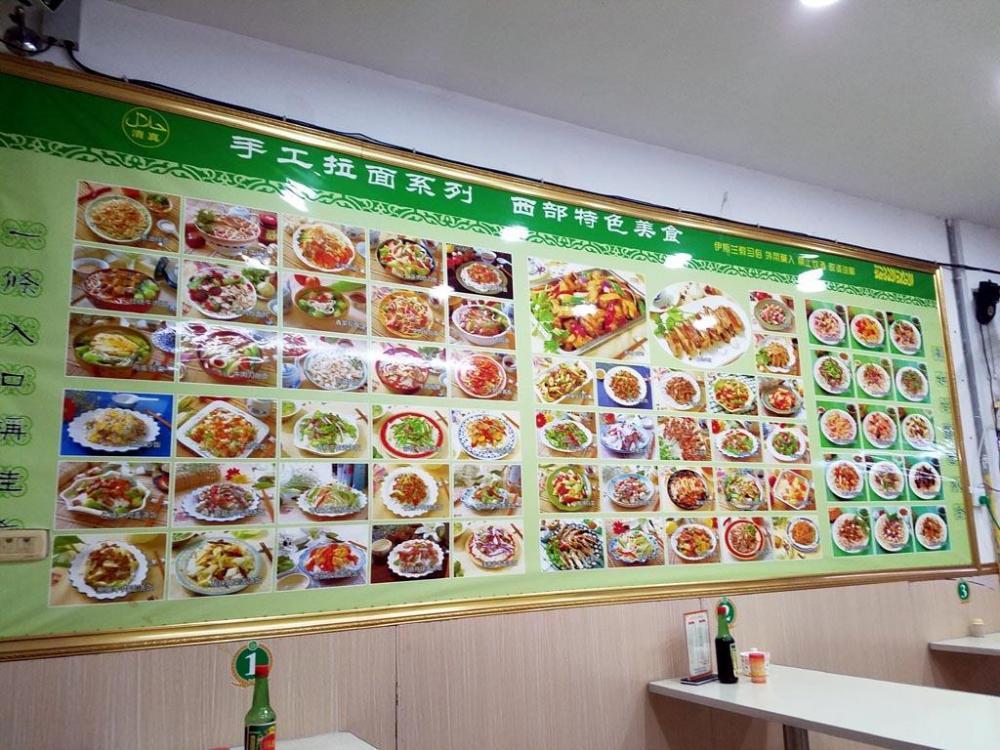
Here are just the noodle dishes in the Lanzhou Lamian restaurant near my home.. There are plenty more.
Beef Hand Pulled Noodles - 牛肉拉面 niú ròu lā miàn
Beef Hand Cut Noodles - 牛肉刀削面 niú ròu dāo xuē miàn -
Egg Hand Cut Noodles - 鸡蛋刀削面 jī dàn dāo xuē miàn
Green Vegetable Hand Pulled Noodles - 青菜拉面 qīng cài lā miàn
Egg Hand Pulled Noodles - 鸡蛋拉面 jī dàn lā miàn
Scallion Oil Soup Noodles - 葱油拌面 cōng yóu bàn miàn
Extra Beef Hand Pulled Noodles - 加肉拉面 jiā ròu lā miàn
Red Cooked Beef Noodles - 红烧牛肉面 hóng shāo niú ròu miàn
Tomato and Egg Hand Pulled Noodles - 番茄鸡蛋拉面 fān qié jī dàn lā miàn
Tomato and Egg Knife Cut Noodles - 番茄鸡蛋刀削面 fān qié jī dàn dāo xuē miàn
Beef Fried Hand Pulled Noodles - 牛肉炒拉面 niú ròu chǎo lā miàn
Egg Fried Hand Pulled Noodles - 鸡蛋炒拉面 jī dàn chǎo lā miàn
Beef Fried Hand Cut Noodles - 牛肉炒刀削面 niú ròu chǎo dāo xuē miàn
Egg Fried Hand Cut Noodles - 鸡蛋炒刀削面 jī dàn chǎo dāo xuē miàn
Beef Fried Noodle Pieces - 牛肉炒面片 niú ròu chǎo miàn piàn
Dried Beef Soup Noodles - 肉干拌面 niú ròu gān bàn miàn
Beef Slices in Broth and Hand Torn Bread - 牛肉泡馍 niú ròu pào mò
Mutton Slices in Broth and Hand Torn Bread - 羊肉泡馍 yáng ròu pào mò
Xinjiang Mixed Soup Noodles - 新疆拌面 xīn jiāng bàn miàn
Steamed Beef Dumplings - 牛肉水饺 niú ròu shuǐ jiǎo
* Kyrgyzstan, Tajikistan, Afghanistan and Pakistan.


